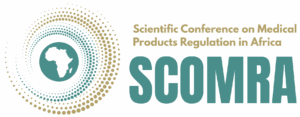Guidelines for Transportation of Pharmaceuticals In Kenya
- Version
- Download 5390
- File Size 3.02 MB
- File Count 1
- Create Date February 18, 2022
- Last Updated September 17, 2025
Guidelines for Transportation of Pharmaceuticals In Kenya
Guidance for Transportation of Pharmaceuticals in Kenya
The Guidelines for Transportation of Pharmaceuticals in Kenya provide a comprehensive framework for ensuring the safe, efficient, and compliant transportation of pharmaceutical products. These guidelines, developed by the Pharmacy and Poisons Board (PPB), outline the standards and best practices for maintaining product quality and integrity during transit. They aim to align transportation practices with international standards and safeguard public health.
Purpose
The purpose of this guidance is to:
- To ensure that pharmaceutical products maintain their quality, safety, and efficacy throughout the supply chain.
- To mitigate risks such as temperature excursions, contamination, or mishandling during transportation.
Scope
This guidance applies to:
- The guideline applies to all entities involved in the transportation of pharmaceuticals, including manufacturers, distributors, importers, exporters, and transporters.
- It covers various modes of transport (air, sea, and road) and emphasizes conditions such as temperature, humidity, and security for pharmaceuticals in transit.
Key Components of the Guidance
- Ports of Entry:
- Defines requirements for handling pharmaceuticals at ports of entry, including proper storage, security, and traceability.
- Highlights the importance of compliance with international standards such as IATA (air transport) and the use of refrigerated systems for sea transport.
- Storage Conditions During Transit:
- Emphasizes maintaining proper temperature and humidity conditions as per product specifications.
- Recommends calibrated monitoring systems to ensure compliance.
- Security and Risk Mitigation:
- Requires vehicles to have lockable doors, security alarms, and traceable records to prevent theft or tampering.
- Calls for contingency planning for emergencies such as equipment failure or vehicle breakdown.
- Product Handling:
- Stresses correct handling procedures to prevent spillage, contamination, or breakage.
- Mandates specific protocols for returned, recalled, or withdrawn pharmaceuticals.
- Traceability and Record-Keeping:
- Requires comprehensive documentation of storage conditions, transport history, and stock movements.
- Ensures records are secure, accessible, and maintained in both paper and electronic formats.
- Standard Operating Procedures (SOPs):
- Mandates the development and implementation of SOPs for the transportation of pharmaceuticals to ensure consistent compliance and operational efficiency.
Roles and Responsibilities:
- Pharmacy and Poisons Board (PPB):
- Oversees compliance with transportation guidelines.
- Inspects and certifies vehicles, storage facilities, and shipping containers.
- Manufacturers and Distributors:
- Ensure products are transported under appropriate conditions.
- Maintain documentation for stock tracking and regulatory compliance.
- Transporters and Logistics Providers:
- Provide calibrated and validated vehicles equipped with temperature and humidity monitoring systems.
- Train personnel on proper handling, storage, and security measures for pharmaceuticals.
- Importers and Exporters:
- Comply with international standards such as IATA and WHO recommendations.
- Maintain proper records of shipping and storage conditions.
- Warehouse and Loading Bay Managers:
- Ensure facilities are adequately ventilated, temperature-controlled, and protected from environmental hazards during loading and unloading.
Attached Files
| File | Action |
|---|---|
| GUIDELINES FOR TRANSPORTATION OF PHARMACEUTICALS IN KENYA .pdf | Download |


